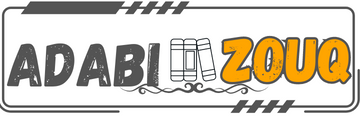Choosing the Right Width and Layout for Your Driveway

As the entryway to your house, your driveway is important from an aesthetic and practical standpoint. Selecting the appropriate width and arrangement is a crucial choice to make when building or remodeling your driveway. The decisions you make in this area can have a big influence on your property’s safety, usability, and curb appeal. We’ll go over the ideas and variables in this blog that should help you decide on the ideal driveway width and arrangement.
The Value of a Creative Driveway Design
Let’s stress the importance of a well-designed driveway before getting into the details of driveway width and layout:
- Curb Appeal: One of the first things guests notice about your house is your driveway. A thoughtfully planned and well-kept driveway can dramatically improve the curb appeal of your home.
- Functionality: Your driveway should make it easy for visitors and residents alike to enter and exit your house. For functionality, the width and arrangement must be correct.
- Safety: Both vehicle and pedestrian safety should be given top priority in a well-designed driveway. Accident risk should be reduced and easy movement allowed by the layout.
- Property Value: Your home’s overall value may rise with a well-planned driveway. The investment has the potential to yield positive returns on resale value.
Selecting the Proper Width:
Your driveway’s width has a significant impact on both its usability and appearance. The following are important factors to take into account when choosing the right width:
- Number of Vehicles: Take into account the number of cars you frequently need to park in your driveway. A driveway for one car usually has a width of 9 to 12 feet, whereas a driveway for two cars can have a width of 18 to 24 feet. You’ll need more width if you have more cars.
- Turnaround Space: If your driveway serves as your main entrance to your house, make sure it is wide enough for cars to turn around in comfort. A broader driveway makes moving around easier.
- Borders and Landscaping: When calculating the total width of your driveway, take into account any borders or landscaping elements you intend to add. This will support the preservation of a harmonious and beautiful appearance.
- Local Regulations: To find out what rules or specifications apply to driveway width in your area, check with the zoning and planning department. There might be particular rules in some places that you have to follow.
- Architectural Harmony: Take into account how your driveway’s width complements your home’s overall architectural design. Rather than taking away from the design, it should enhance it.
Selecting the Optimal Design:
The way your concrete driveway Greenville is designed and how it blends in with your property is referred to as its layout. Some layout considerations are as follows:
- Straight Driveway: This is a traditional and uncomplicated design option. It’s a popular choice because it’s simple to install and maintain. On the other hand, properties with unusual topography or small spaces might find it unsuitable.
- Curved Driveway: A curved driveway gives your home more elegance and visual appeal. Additionally, it may be more accommodating for properties that have slopes or trees as obstacles. A friendly entrance may be created by the soft curve.
- Circular Driveway: A circular driveway provides an impressive entrance as well as effective traffic management. Larger properties or those with several entrances benefit greatly from this flexible arrangement. It’s also a great option for homes with large front yards.
- Split Driveway: An entrance and an exit lane are divided by a split driveway, sometimes referred to as a divided driveway. Particularly for households with multiple vehicles, this arrangement can aid in preventing congestion and enhancing traffic flow.
- T-shaped Driveway: To create a T-shape layout, a straight driveway and a perpendicular driveway are combined. It’s a practical design with an eye-catching appearance that can hold several cars.
Additional Things to Think About
When designing your driveway, keep the following other important factors in mind in addition to width and layout:
- Material: Pick the appropriate driveway material, such as pavers, concrete, asphalt, or gravel. Every material has benefits and aesthetics of its own.
- Slope and Drainage: To stop water from collecting on your driveway, make sure that the grading and drainage are correct. For longevity and safety, proper drainage and slope are crucial.
- Lighting: Your driveway’s aesthetic appeal and safety can both be improved with outdoor lighting. If you want to light up the pathway at night, think about installing lighting fixtures along the driveway.
- Landscape: To soften the hardscape and improve visual appeal, include landscaping features along your driveway. Gardens with flower beds, shrubs, and trees can make a space feel welcoming.
- Edging and Borders: Use edging or borders to mark the limits of your driveway. These can help stop erosion and give the area a polished appearance.
- Maintenance: Take into account the upkeep demands of the driveway material and design you have selected. Certain materials might need more maintenance than others.
In Summary:
Choosing the proper driveway width and arrangement is essential to building a welcoming, useful, and secure front door for your house. When making these choices, take into account your unique requirements, the quantity of vehicles, local laws, and the architectural design of your house. A well-planned driveway raises the curb appeal of your house, increases its value, and makes it more convenient. To explore various driveway options and expert guidance, view the Modern Concrete Contractors’ website.





